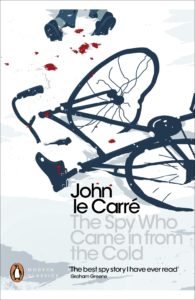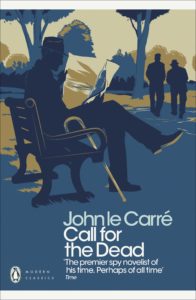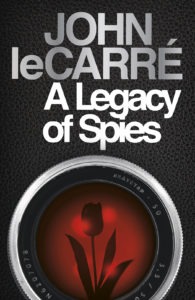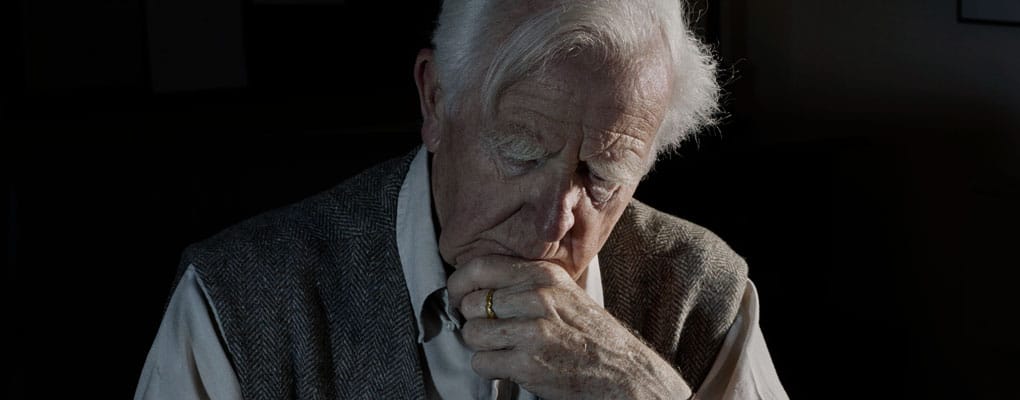Books
Matthew Richardson on John le Carré
I’ll always remember the first time I came across a book by John le Carré. There was an old hardback on our shelves at home that didn’t have a dust jacket. It was smaller than a hardback today, boxy with a scuffed-brown surface. One glance at the copyright page showed that it was from the early sixties. It had belonged to my grandfather and survived countless moves and clear-outs. And it had a funny title too, ungainly and on-the-nose: The Spy Who Came In From The Cold.
 I was a reluctant reader in those days. The one thing that I liked about the book was that it seemed wonderfully slim – fewer than three hundred pages. It could be read in days rather than weeks.
I was a reluctant reader in those days. The one thing that I liked about the book was that it seemed wonderfully slim – fewer than three hundred pages. It could be read in days rather than weeks.
You can read le Carré’s masterpiece in a modern edition, but nothing beats the original. Crabbed sixties type. The thicker texture of the pages. The ration-book plainness. I didn’t know much of the Cold War then, but it didn’t matter. Like all great novelists, le Carré created a world that was both crunchily authentic and yet one of pure imagination.
I can still remember getting to the twist at the end, so devastatingly perfect it’s proved a curse for all who have followed. Back then, my first love was Agatha Christie, and I thought I was a connoisseur of narrative magic, the way in which all your expectations could be sent into freefall with one carefully crafted sentence. Even so, the twist made a great book into a classic one. It is still, perhaps, the ultimate example of popular fiction that has the quality of art.
 I soon moved on to his other works. Sticking with the shorter novels, I tried the first two books, Call for the Dead and A Murder of Quality. Both introduced me more fully to the character of George Smiley, only glimpsed in The Spy. He soon completed my personal trinity of fictional heroes, taking his place alongside Sherlock Holmes and Hercule Poirot. Bronze-medal exteriors with gold-medal brains.
I soon moved on to his other works. Sticking with the shorter novels, I tried the first two books, Call for the Dead and A Murder of Quality. Both introduced me more fully to the character of George Smiley, only glimpsed in The Spy. He soon completed my personal trinity of fictional heroes, taking his place alongside Sherlock Holmes and Hercule Poirot. Bronze-medal exteriors with gold-medal brains.
Back then, a film had just been made of The Constant Gardener with Ralph Fiennes and Rachel Weisz, and I picked up a tie-in edition. This was my first taste of late le Carré, that more acquired taste. The well-trimmed sentences of the early sixties grew straggly and diffuse, glorious in their own freewheeling way. They curled and ricocheted over the page, like Dickens in Bleak House, successful enough to let the full stop linger.
From then on, I kept up with every new le Carré book as they came out. The Mission Song, A Most Wanted Man, Our Kind of Traitor. The film of Tinker Tailor Solider Spy was released when I was just finishing university. It prompted the first thoughts that I might have a go at writing something like that myself. Two years later, I was making good on that promise. I read A Delicate Truth in a tiny flat in Pimlico – le Carré-esque wallpaper, if nothing else – working in Parliament by day and writing by night.
 And so it came to last summer and the publication of The Legacy of Spies, billed as the follow up to The Spy and a last glimpse of Smiley. For the first time, I bought a new le Carré book not just as a fan but now – improbably – also as a fellow Penguin spy writer. I was taken back to that lumpy brown hardback of my grandfather’s, and the journey it had taken me on from reluctant reader to professional writer.
And so it came to last summer and the publication of The Legacy of Spies, billed as the follow up to The Spy and a last glimpse of Smiley. For the first time, I bought a new le Carré book not just as a fan but now – improbably – also as a fellow Penguin spy writer. I was taken back to that lumpy brown hardback of my grandfather’s, and the journey it had taken me on from reluctant reader to professional writer.
The last George Smiley novel was published in 1990, the year I was born. The sequel twenty-seven years in the making. As I opened The Legacy of Spies, I knew it was a book I’d been waiting a lifetime for.
In my case, literally.
Matthew Richardson is the author of My Name is Nobody, out now in paperback.



Please note: Moderation is enabled and may delay your comment being posted. There is no need to resubmit your comment. By posting a comment you are agreeing to the website Terms of Use.